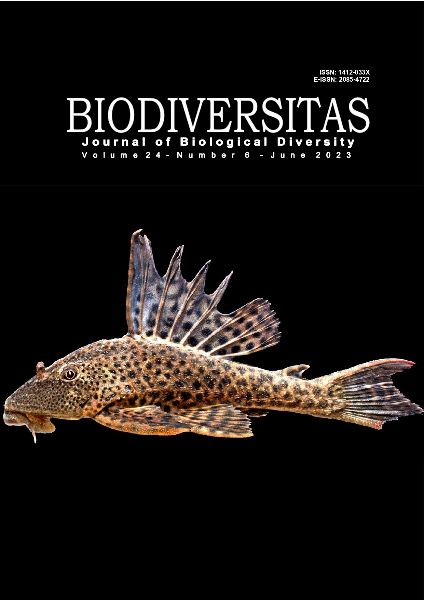Soil macrofauna diversity and weed dynamics in response to different methods of weed control in smallholder rubber farming
##plugins.themes.bootstrap3.article.main##
Abstract
Abstract. Chaniago I, Yulistriani, Umami IM, Bukhari ZZ. 2023. Soil macrofauna diversity and weed dynamics in response to different methods of weed control in smallholder rubber farming. Biodiversitas 24: 3106-3113. Weeds interference in rubber farmland may reduce latex yield. Farmers apply herbicides to control weeds. However, the herbicide not only controls weed but also affects the presence of soil macrofauna. A study has been conducted to determine the effect of different method of weed control on soil macrofauna and weeds at smallholder rubber farming at Pulau Punjung, Dharmasraya District, West Sumatra, Indonesia. The experiment was conducted in a completely randomized block design with 6 treatments and 4 pseudo-replications. Treatment was mechanical control, without weed control, and 4 doses of herbicide glyphosate+metsulfuron-methyl (1.5 L ha-1 + 15 g ha-1, 2 L ha-1 + 15 g ha-1, 2.5 L ha-1 + 15 g ha-1, 3 L ha-1 + 15 g ha-1) with 400 L ha-1 of volume. Pitfall traps were used to collect the soil macrofauna. Data were analysis with ANOVA for weed and soil macrofauna in response to different methods of weed control. Results demonstrated that the application of glyphosate+metsulfuron-methyl herbicide significantly suppressed weeds higher than that of other methods of weed control (p<0.05). Para grass (Brachiaria mutica (Forssk.) Stapf) was the most dominant weed but has been affected most by 3 L ha-1 + 15 g ha-1 herbicide mixture. Soil macrofauna of the order Hemiptera was affected most by the application of herbicide with a total reduction of 71.58% of number of individuals at 12 weeks after application of herbicide. In general, different weed control methods resulted in varied numbers of orders and individuals of the soil macrofauna.

